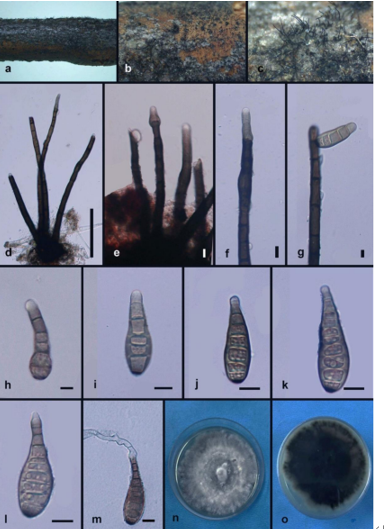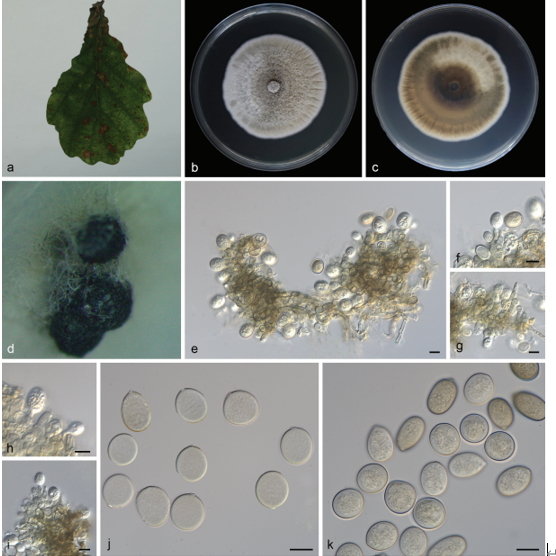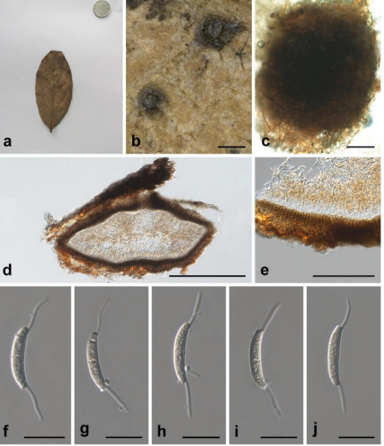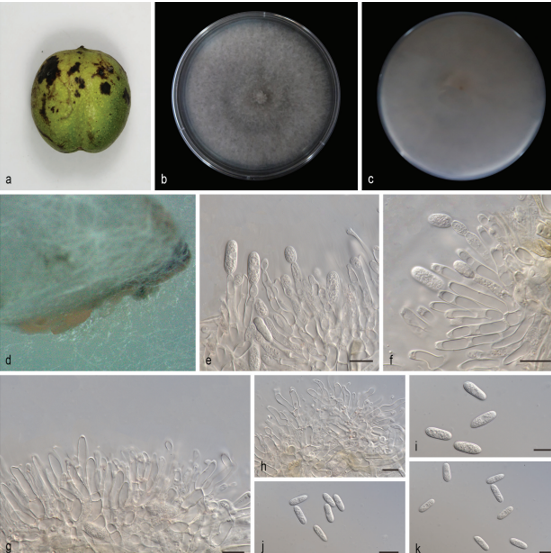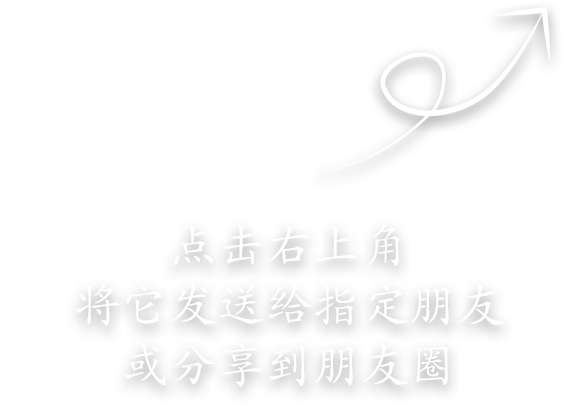Trichoderma xixiacum Jing Z. Sun & X.Z. Liu, sp. nov.2020
MycoBank No: 833235
Holotype China. Xixia District, Yinchuan, Ningxia Hui Autonomous Region, 38°38'52"N, 106°9'33"E, ca. 1127 m elev., from rhizosphere soil of Lycium chinois, 17 Oct 2018, Jing Z. Sun (HMAS 248253, holotype), ex-type culture CGMCC 3.19697.
Morphological description
On CMD after 72 h, colony radius 55–56 mm at 25 °C, covering the plate at 30 °C, 9–11 mm at 35 °C. Colony hyaline, indistinctly zonate, mycelia loose. Aerial hyphae short, inconspicuous. No diffusing pigment, not distinct odor (Fig. 4B). Conidial production noted after 3 days, effuse in aerial hyphae, becoming blue-green after 4 days. Chlamydospores unobserved. On PDA after 72 h, colony radius 59–60 mm at 25 °C, covering the plate at 30 °C, 7–8 mm at 35 °C. Colony white to yellow-white, regularly circular, indistinctly zonate; mycelium dense and radial. Aerial hyphae conspicuous. No diffusing pigment, not distinct odor (Fig. 4A). Conidial production noted after 3 days, starting around the original inoculum, effuse in the aerial hyphae, first white, turning blue-green after 7 d. Chlamydospores unobserved.
On SNA after 72 h, colony radius 51–52 mm at 25 °C, 52–53 mm at 30 °C, 4–5 mm at 35 °C. Colony hyaline, indistinctly zonate; mycelium loose, especially at the margin. Aerial hyphae short. No diffusing pigment, not distinct odor (Fig. 4C). Conidial production noted after 2 days, starting around the inoculum, effuse in the aerial hyphae. Small pustules formed around the inoculum, first white, turning green after 3 d, with hairs protruding beyond the surface. Conidiophores pyramidal with opposing branches, less frequently solitary, closely-spaced branches, each branch, and the main axis terminating in 2–5 cruciately to nearly verticillately disposed phialides (Fig. 4F, G, I). Phialides ampulliform to lageniform, often constricted below the tip to form a narrow neck, hyaline, (3.2–)3.5–7.0(–9.3) × (2.3–)2.6–3.3(–3.6) µm (‒x = 5.0 × 3.0 µm, n = 50), length/width ratio (1.2–)1.5–2.5(–4) ‒(x = 1.8, n = 50), base 1.6–2.2 µm ‒(x = 1.8 µm, n = 50) (Fig. 4I). Conidia subglobose to globose, smooth, hyaline when young, becoming green to dark green with age, (2.0–)2.3–2.7(–3.0) ×
(1.6–)2.0–2.6(–3.0) µm ‒(x = 2.5 × 2.2 µm, n = 50), length/width ratio 1.0–1.3(–1.7)
‒(x = 1.1, n = 50) (Fig. 4H). Chlamydospores unobserved. No odor; no diffusing pigment observed.
Habitat: rhizosphere soil of Lycium chinois
Distribution: China.
GenBank Accession: ITSMN594478、MN594477 RPB2MN605874、MN605875 TEF1-aMN605885、MN605886
Notes: Characterized by tree-like conidiophores, verticillate or in whorls of 3–4, ampulliform to lageniform phialides (3.5–7.0 × 2.6–3.4 µm), subglobose to globose conidia (2.2–2.6 × 2.0–2.4 µm). Differs from Trichoderma lentinulae by compact, relatively smaller phialides, and the character of pustules on SNA. Differs from Trichoderma lixii by shorter and wider phialides and smaller conidia.
Reference: Gu X, Wang R, Sun Q, Wu B, Sun J-Z (2020) Four new species of Trichoderma in the Harzianum clade from northern China. MycoKeys 73: 109–132. https://doi.org/10.3897/mycokeys.73.51424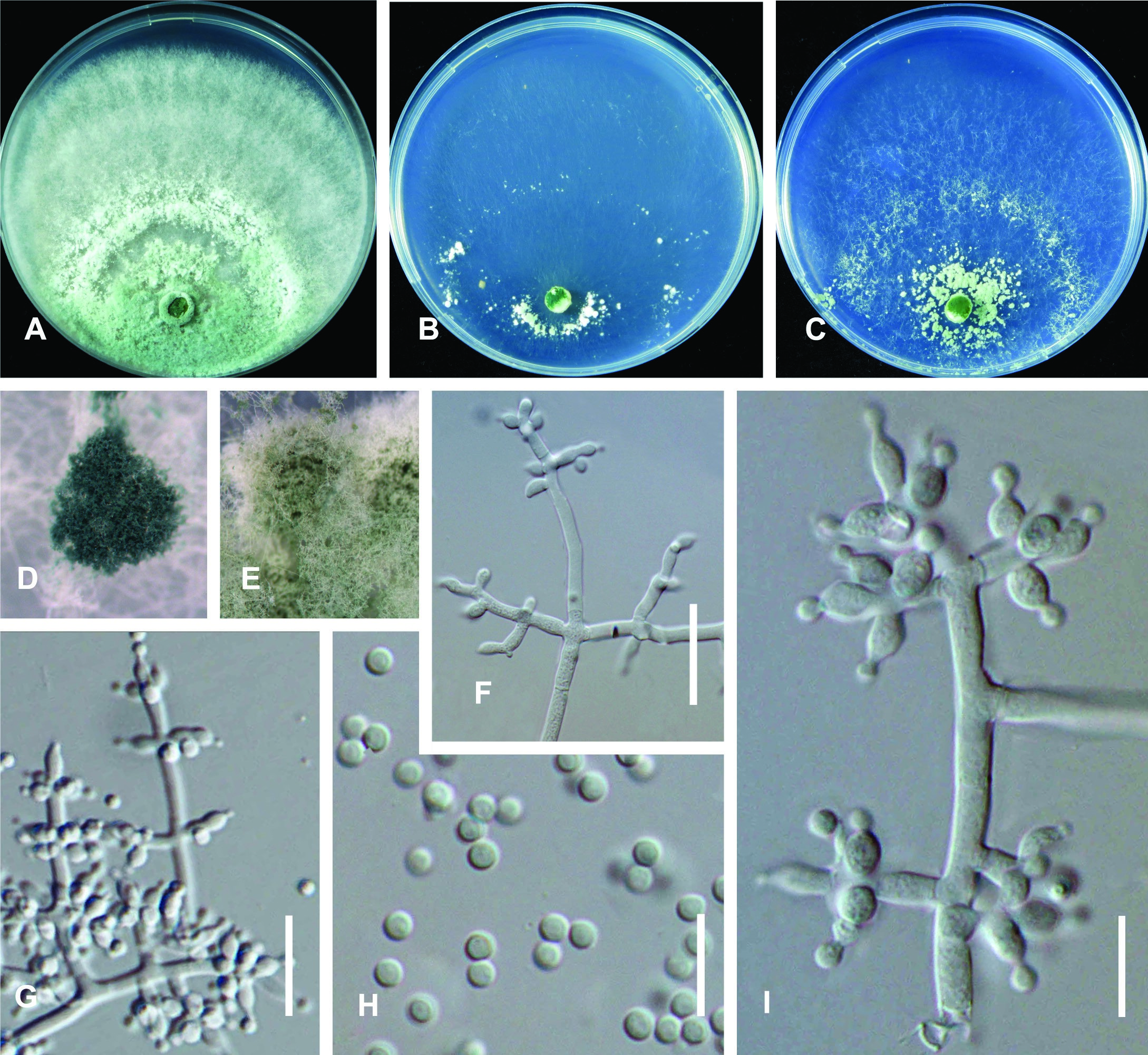
Figure 4. Trichoderma xixiacum (CGMCC 3.19697). Cultures at 25 °C after 3 d (A on PDA B on CMD C on SNA) D conidiation pustules on CMD after 10 d E conidiation pustules on SNA after 10 d F, G, I conidiophores and phialides H conidia. Scale bars: 10 µm (F, G); 10 µm (H, I).


